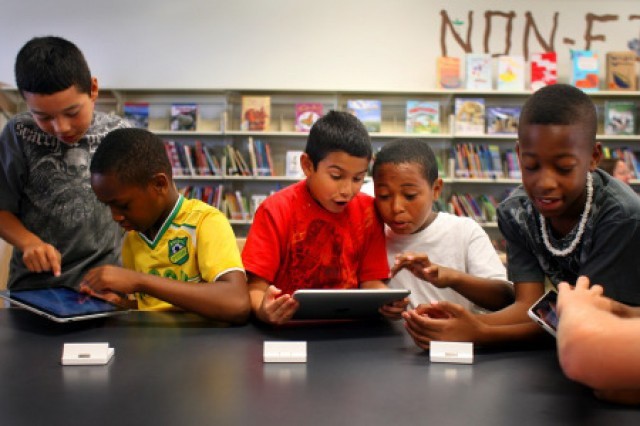Apple kicked off 2012 with its education event in New York. At that event, the company announced its electronic textbooks for iPad initiative, iBooks Author, and the revamped iTunes U. According the Apples latest financial data, the education initiative has paid off with both iPads and Macs being purchased by schools in record numbers.
A 21st century vision of education , however, is about more than getting the iPads and MacBooks into the classroom. It also requires technology goals, professional development for teachers, high-speed access to up-to-date content, education-centric portals for students and teachers, back-end systems, and education apps or software.
How are American schools doing when it comes to integrating technology (Apple or otherwise) into the classroom and reaching for that vision? Not bad but not great according to an annual survey by the Software & Information Industry Association (SIIA).
SIIA’s annual Vision K–20 Survey shows that schools are making only limited progress in leveraging new technologies in the classroom. In many ways that progress has remained essentially flat since last year’s study.
Despite the news stories of large iPad deployments and a challenging economic climate, overall technology spending by schools remained pretty much constant compare to last year. One possible explanation for that dichotomy is that iPads are less expensive per student that MacBooks and some PC notebooks.
Overall, the vast majority of the 1,700 educators surveyed (73%) ranked their schools in the middle when it comes to technology integration. All educators acknowledged there is room for improvement.
There were, however, areas where U.S. schools did well.
- Student data security and privacy
- Access to high-speed broadband connections
- Use of that broadband to deliver “multimedia-rich learning and collaboration”
- Use of school websites as portals for community information and education resources
There were several areas in need of improvement
- Access to courseware and technology-based curriculum
- Availability and use of interactive multimedia courseware and simulations
- Access to online professional development and collaboration tools for teachers
- Availability of supplemental content and online tutoring accessible to all students
- Courseware and learning management systems used to differentiate instruction
- Integration of enterprise tools and systems for school administration
It’s worth pointing out that the availability of courseware and electronic resources includes electronic textbooks. As we’ve noted previously, even by modest standards, Apple’s iBookstore doesn’t yet offer a complete range of textbooks across all subjects and grade levels. The selection is improving, however.
Perhaps the biggest positive data point in the study is that teachers are developing a consistent vision of what a 21st century classroom can and should be even if they haven’t been able to achieve that vision.
Comparing current scores with ideal scores indicates that educators have a vision for how they would like technology implemented. While most do not see 100% technology integration as ideal across all benchmarks, the gap between ideal and current usage scores indicates room for and desire to improve.


